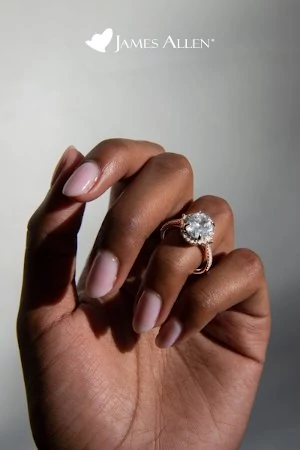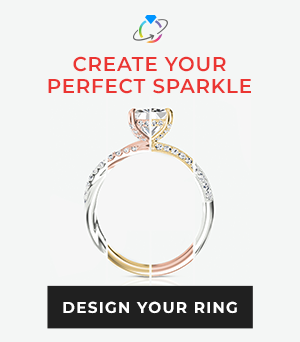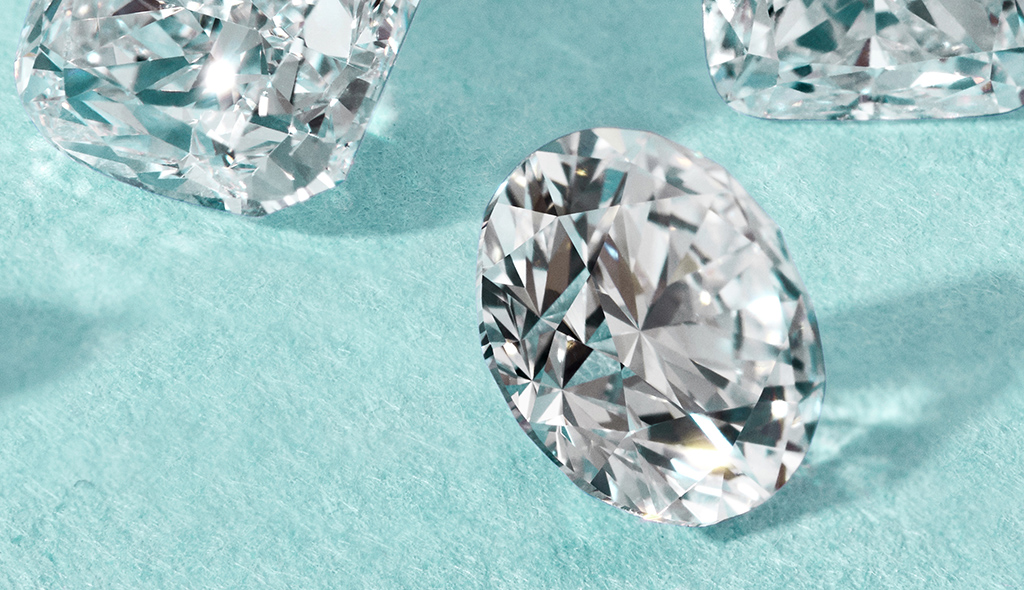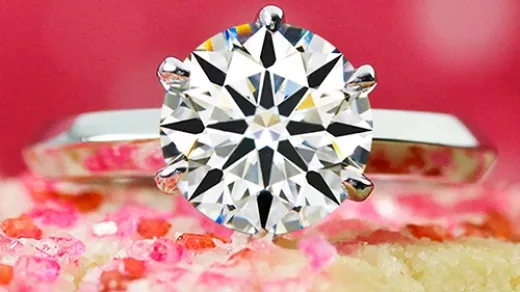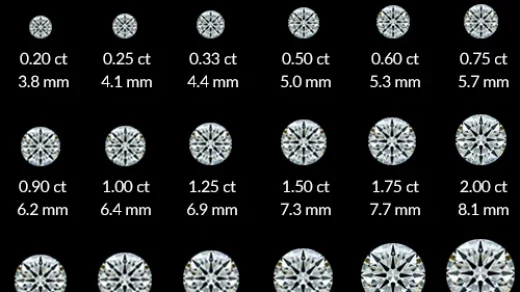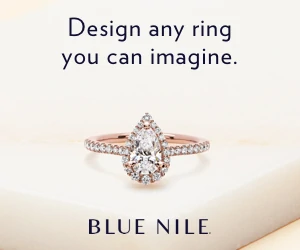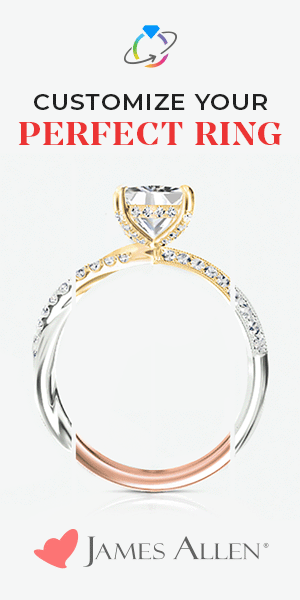If you’re looking for a diamond, the round brilliant cut is likely your first stop. It’s hands down one of the most popular styles for engagement rings. It’s eye catching on the finger, it has sparkle, and it’s the classic look associated with the name diamond. Here I will go over how to choose one at James Allen.
If you want to get straight to the best ones use this button to execute the search described in this article:
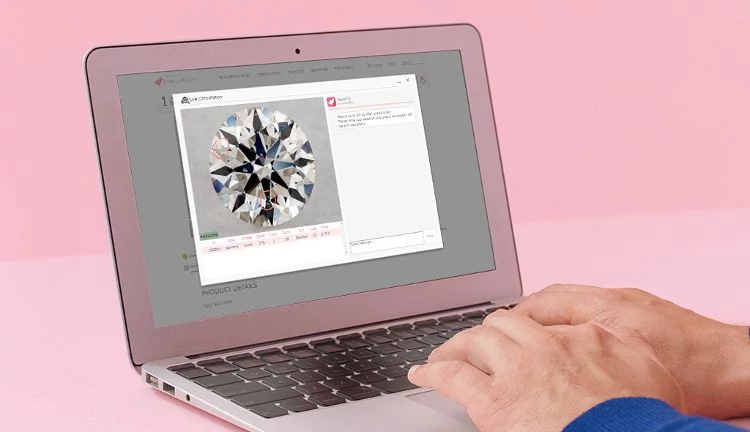
So how do you go about choosing the right diamond?
Let’s start with getting to know the round brilliant.
The Round Brilliant Cut Diamond Described
Hand someone a round brilliant diamond and watch their eyes light up. It’s a mesmerizing shape and a guaranteed winner in my books.
Diamonds, to many people, represent love, purity, beauty, and success.
The Round Brilliant Cut is super popular for engagement rings and also make a great gift as diamond studs.
The shape is very versatile to set in jewelry and it can be used in many different ring designs. You’ll always have more options if you choose a round brilliant.
Round brilliant cut diamonds have a round girdle outline, symmetrically placed triangular and kite-shaped facets and a table. They have 57 facets, though they can also have one additional facet at the bottom (called a culet).
The design is engineered to produce incredible sparkle and the flashes of color.
The classic flash we associate with diamond is found foremost in this shape known as the round brilliant.
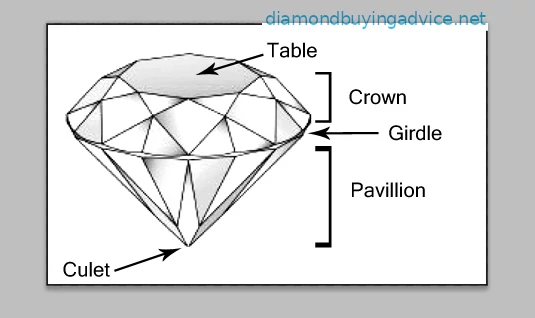
Those are the basic features, but beyond that you will find that every diamond is unique.
The idea behind the round brilliant is to gather and return light.
Diamond acts as both a window and a mirror.
Light enters the diamond. It is then reflected off the inside of the facets. The light is then returned to the eye of the beholder. This brightness.
Of course if the facets aren’t pointing in the right direction light will be sent elsewhere.
A deep cut tends to send the light across the pavilion to leak out on the other side of the diamond while a very shallow cut can send the light through the pavilion, as the angle may not be sharp enough for the light to make any bounce at all.

The best diamonds have their facets arranged in such a way as to cause the light passing through the diamond to split into an array of colors. This is termed “fire” and is one of the most magical things about diamonds.
How To Find The Best Diamond
If I handed you a few diamonds of varying qualities you I am certain you could tell me which one looks the best to you.
If a diamond looks like it’s full of sand, you’d probably not choose that one.
If one of the diamonds sparkles more you’d probably pick that one.
That’s what quality is mostly about. It’s generally a straightforward thing.
But is it possible to buy a diamond based on a description alone? I wouldn’t recommend it.
High resolution images are as important as getting to see the diamond in person.
If the merchant has a strict protocol for the photography of their diamonds (as does James Allen) then you get a great deal of information which you may or may not get from handling the diamond yourself.
Before James Allen launched there were online diamond sellers, but no one had thought that what people want are actual images of the diamonds.
Most online diamond trading had relied on the diamond grading reports alone.
Today every diamond merchant is expected to have 360° images or they aren’t taken very seriously.
Don’t get me wrong, diamond grading reports issued by a respectable lab like GIA or AGS (or HRD in Europe) are vital.
Without a diamond grading report you’re reliant on the word of the dealer, who is relying on the word of their supplier, who is relying on the word of the manufacturer (the cutter), who is relying on the word of their supplier, and so on.
So even if you trust your jeweler, it’s still no substitute for a diamond grading report. Diamonds are usually submitted to a lab for grading without any information regarding the stone.
This way the lab can examine the stone and determine from the examination alone if it is natural, lab grown, simulant, composite, or what have you.
Ideal Proportions For Round Brilliant Diamonds
There are a number of variables which interact to produce an ideal diamond. But if we were to condense those ideal parameters into as small a range as possible it would be something like this:
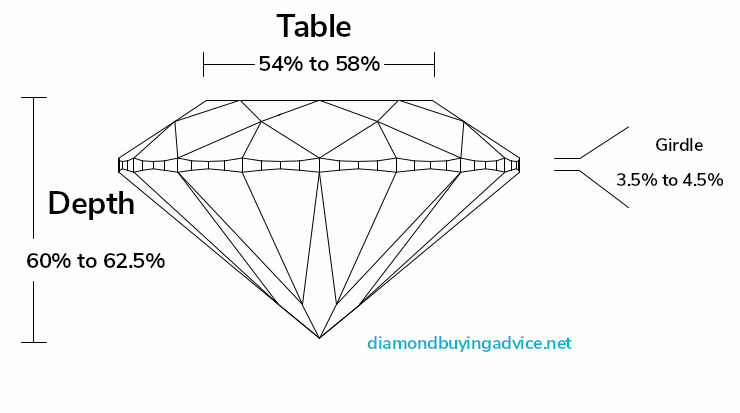
This is what a search at James Allen would look like to return the most diamonds with ideal dimensions/angles:
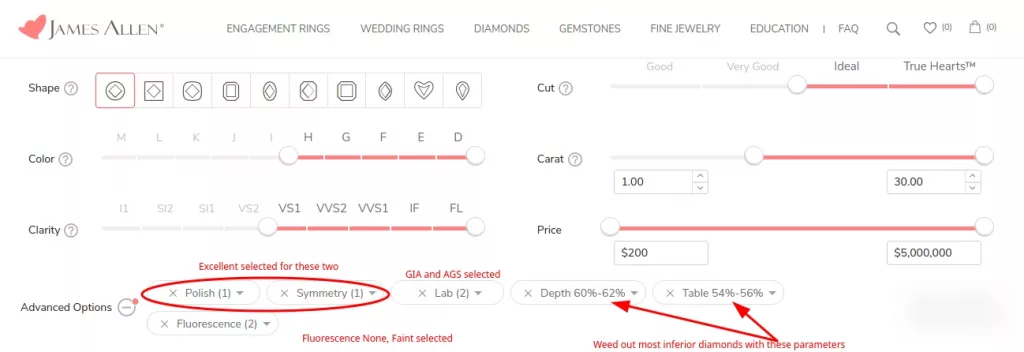
You may have noticed that I have narrowed the parameters just a little so the ones used in this search are a little stricter than the ones I stated earlier. So once you land on James Allen’s search page feel free to adjust the table parameter to include diamonds which have a table percentage up to 58%.
It has been my experience that these parameters return a larger array of ideal diamonds. Try it for yourself.
Obviously from there you can adjust the parameters to include lower color and clarity grades.
However this article is concerned with returning the best diamonds, not merely the passable diamonds.
Today’s search using the above parameters returned a beautiful array of diamonds as shown in the screenshot below.
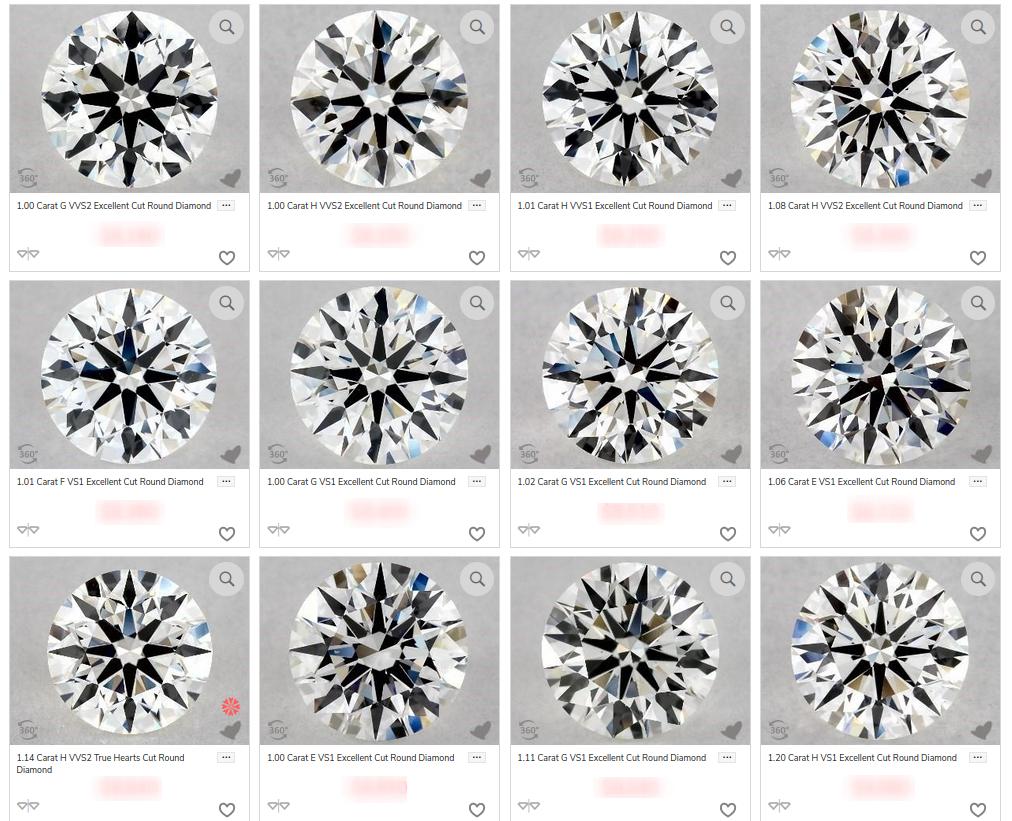
Which Clarity To Choose
The best looking diamonds are invariably going to have a clarity of VS2 or better.
There are traditions in some cultures regarding the clarity of a diamond.
Clarity therefore is often associated with purity.
For this reason I don’t get too dogmatic about only choosing VS2 clarity.
The search parameters shown above will return VS1 and above, but you can of course adjust the slider to include VS2 diamonds. I usually draw the line there.
Why?
Well I have seen too many people sending their diamonds back for an exchange or refund after choosing SI1 and SI2 diamonds.
Sure there are occasional exceptions, but it’s really like chasing a needle in a haystack.
For most people there are better ways to spend their time.
Which Color To Choose
If you are very color sensitive then stick with H color or better. In North America the sweetspot for color is considered to be G-H whereas in India and Israel the sweetspot is considered to be I-J. If you are looking for the best value, then obviously the lower color grades will be of interest to you.
I would encourage you though to drop the carat weight first before going too low in color (and clarity). This is supposed to be a forever stone!
Don’t settle for something that in the end doesn’t look stunning!
And the fact that some stones are cheap, well, they’re cheap for a reason!
Some stones are hard to sell and the only thing that is attractive about them is their price.
It is absolutely true that you get what you pay for.
I can guarantee you that you will find all the best diamonds by using the search parameters I describe,
and I have made it as easy as I possibly can for you by creating this one click search button so you don’t have to fuss with all the sliders and settings.
Send in your question
If you are looking to buy any type of diamond jewelry online you are welcome to send in any questions you may have.
As an affiliate of the some of the world’s finest jewelers I am motivated to find the right purchase that is perfect just for you. Every person has specific needs and every jeweler has specific areas in which they excel.
Please use your preferred contact method.
Thomas J Stevens GIA DG CSG

If you contact me by email and do not receive a response within 48 hours possible reasons include: my response has ended up in your spam folder; your inbox is full; The best thing after a 48 hour delay is to try again, maybe using a different contact method.

